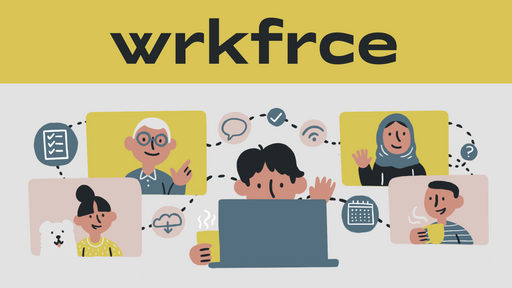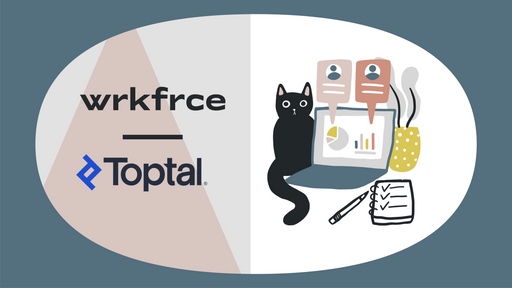Summary: Zapier’s Guide to Remote Work
by Sarah Archer

The global rise of reactive remote work in 2020 spawned a proliferation of playbooks published by many of the leading remote-first companies, which open-sourced the knowledge they’ve gained from years of successful fully remote operation to help other businesses follow their lead. There’s only one problem: These playbooks are loooooong. So wkrfrce has condensed them into abridged versions—CliffsNotes, if you will. Digital nomad Sarah Archer, a passionate advocate of remote and flexible work, has combed through thousands of pages of remote-first strategies to deliver the most unique, most useful, most actionable insights to help make working remotely work for you.
Zapier’s beginnings are not unique—a bootstrapped side hustle shared by three dedicated cofounders. But what sets Zapier apart from other successful startups is its dedication to operating as a distributed company from the start.
This fully remote setup allowed the company to cast a wide net over a global talent pool, growing their team to more than 300 with a user base pushing 3 million.
Zapier narrowed its ingredients for making remote work, work well: team, tools, and process. We reviewed the company’s in-depth guide and share our biggest takeaways, revealing just how Zapier does it.
Hire Doers and People That You Trust
Running a distributed company comes with plenty of benefits—especially the ability to tap the global talent pool. To use that diverse pool most effectively, you need to establish a hiring process that helps you fully realize a candidate’s experience, personality, and connection to the team.
- Look for candidates who
Can prioritize, are proficient in writing, and have a nonwork support system to interact with while working remotely. - Get your team involved
Encourage teammates to comment on candidates’ applications. Then, nominate someone as point person for the position, keeping track of this input so it doesn’t get shelved or lost. - Follow a process
Invite top candidates for a video call, test their competence with a brief project, and check their references using SkillSurvey. - Combat first-day jitters
Build rapport from day one by sending a new employee a quick message, offering to be available for any questions, sharing some fun Slack channels, or explaining team retreats. - Measure and value output, not input
Checking when employees log in or out is retro management. Instead, reiterate how you value trust and autonomy by measuring productivity through their output.
Automated Workflows and Established Methods Are the Keys to Asynchronous Work
One of Zapier’s core values is “Don’t be a robot, build the robot.”
Automation runs deep for Zapier, a leading web-application automation service. Its team lives and breathes the product, implementing zaps—automated workflows—to facilitate events between apps. For example, zaps can update your status on Slack when a meeting starts or when your workday ends, without your having to update or synch. Or they can promote regular discussion between team members by sharing a random GIF or a weather update.
In addition to using automation, teams follow established methods to successfully work asynchronously.
- Make files editable
Allow team members to make changes to your project while they’re on that train of thought by granting full access to Google Drive, Dropbox, or any other tool you use. - Always use links
Add context to the brief from the start by linking to a thread, document, video, or other supporting documents. - Record videoconferences and calls
Allow those who work in different time zones to view any virtual meetings they missed so they can add input. - Default to action
If you’re 80% sure about something, but have no response from the decision maker, take action. You can always change it later.
Promote and Support Collaboration
Working asynchronously leads to fewer distractions, allows the freedom to work when you’re most productive, and emphasizes output versus seat time. However, with no constant in-person collaboration, everyone must actively make an effort to stay in sync.
- Brainstorm through visual collaboration
Use an online app to collaborate in real time through features that let you attach files, insert links, and add comments or sketches. Brainstorming works best alone or in smaller groups; don’t be afraid to jump on a video call during the process to keep the spark going. - Use Slack, asynchronously
A new idea can bloom at any time—so why limit your team brainstorm to one time block? Create a Slack channel dedicated to brainstorming where team members can drop in ideas at any time without the pressure to align time zones. - Make meetings purposeful, not the default
If you don’t need a meeting, don’t have one. Meetings should be intentional and have a clear purpose. They also should start and end on time, follow an agenda, and assign someone to take notes. - Agree on a meeting protocol
No one likes presenting via video call with a blank screen staring back. Before the meeting begins, teams should decide if their meetings will be video and audio enabled. When in doubt, default to video, at least until everyone signs in and says hello. Keep your audio on for meetings with five or fewer people; mute yourself in meetings of five or more. - Value your colleagues’ time
Be specific, put your main ideas first, and provide context or links. Use acronyms or jargon only if you’re absolutely sure that everyone will understand; instead, use familiar keywords that are easily searchable for future reference.
Remote Culture: Create but Don’t Force
In a remote work environment, you miss the banter by the refrigerator when you drop off your lunch or a midday catchup over coffee at a nearby cafe. Isolation is real, and the fear of isolation can be daunting for those transitioning to remote. Zapier promotes a fun culture without forcing people to participate in (Hey! Foosball, anyone?) inauthentic culture-building activities.
- Provide virtual perks
Zapier gives everyone Spotify, iTunes, or Google Play credits for listening (and sharing) music through the day. They also periodically reward folks with a Tango Card to spend on eBooks. - Use GIFs and memes
These go a long way by adding amusement through the workday. (Be aware that some humor does not travel well across all cultures.) - Open conversations with a purpose
Small interactions matter, but avoid just saying “Hey” and then waiting for an answer. Offer to help with something, tell your colleague why you’re reaching out, or respond privately to comments made in public channels. And don’t take it personally if a response doesn’t come back right away—wait for it rather than sending a stream of messages. - Build teams virtually
In a remote setting, everyone has to be more intentional about building camaraderie and being social. Create a social calendar with activities that can take place online like a board game, video game, coffee walk and chat, book club, skill share, or happy hour. Zapier sets weekly hangouts in small teams and pairs buddies for short calls via Donut in Slack. - Facilitate in-person meetings
Although an all-remote workforce will never meet in person all at once in the same place, you can schedule a company retreat to hold deeper conversations and provide an opportunity for the team to connect and have fun in person. - Embrace contrasting clocks
Emphasize that employees have complete control over their schedule and workspace by allowing them to work when their energy is high, not just when their local clock says 9 a.m. - Promote transparency
Working remotely means that you’re opening your home (virtually) to your colleagues. Be aware of your privacy needs (and those of your family) but also be willing to share a bit: Show off that cool new print on your workspace wall or introduce your pets or family.
The Right Tools Make Life Easier
One tip that the Zapier team emphasizes is the importance of using tools that support remote work. These are some favorites.
- Desktop software
To troubleshoot an issue occurring on a teammate’s computer, use Remote Desktop client or Apple Remote Desktop. - Chat apps
Slack has dominated the remote work world, and for good reason, as it supports work and social chatter at every level: one-on-one, team wide, and company wide. - Screen sharing
Make your meeting as interactive as it would be in person by screen sharing via Slack, Zoom, or Screenleap. - To-do list
Many Zapier workers keep it simple (and organized) by using shared Google Sheets, while others use apps like Todoist. - Project management
Most teams use Jira, but some use Trello or Airtable. - Note-taking
Evernote and Microsoft’s OneNote are the most popular. - Password manager
Secure sensitive data by sharing passwords through an app like 1Password. - Time zones
Use Every Time Zone to quickly reference the best time overlap for your team when you need to meet synchronously.
Managers Help Define a Successful Workforce
Managing a remote team requires a different approach from managing a collocated team. When everyone is remote, employees easily can go unnoticed, their stress camouflaged off-screen. So it’s up to remote managers to care genuinely about their team’s happiness and growth, which is basic human decency but also helps grow your business.
“When something doesn’t go right at a remote business, the remote part is a really easy thing to point your finger at. But I’d bet that it’s more the business part that’s having trouble—like your business model is wrong, or your management structure is wrong.”
—Wade Foster, CEO of Zapier
Zapier managers live by these tips to lead their teams:
- Genuinely care
It’s more challenging to pick up cues from someone who is struggling in their personal life or career when you have limited in-person or video contact. Go beyond employees’ to-do list and ask them how they’re doing. - Support employee growth
No one wants a stagnant career. Hold regular conversations with your employees about their career goals and how you can help employees achieve them. - Set expectations from the start
Direct reports can’t read your mind. Clearly convey your expectations for deliverables, including response timing and updates. - Give regular feedback
Compliment people when they deserve it; be specific and authentic. If performance wasn’t up to your expectations, tell your employees right away (again specific and authentic) so they can correct it. - Urge problem-solving
Give employees a sense of autonomy by encouraging them to solve problems independently or in a small group. - Protect core work
It’s easy for remote employees to be pulled in different directions, so help them prioritize their most important projects.
After almost a decade of experience working remotely, Zapier knows how to hire, work, and grow in a remote environment. Check out how other top remote companies do it through our remote playbook series.









